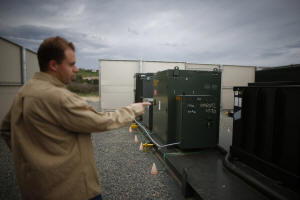|
Developers and power plant owners reported plans to increase
utility-scale battery storage from 7.8 gigawatts (GW) in October
this year to 30 GW by the end of 2025, according to the EIA's
Preliminary Monthly Electric Generator Inventory.
Battery storage capacity, which only started to take off in the
United States in 2020, was expected to reach 9.1 GW by end-2022,
before doubling in 2023 to 19 GW and hitting 28.4 GW in 2024.
"Much like solar power, growth in battery storage would change
the U.S. electric generating portfolio," as it will make
intermittent sources of energy like wind and solar more stable
by storing extra energy for use later, the EIA said.
More than three-quarters of the planned 20.8 GW additions are in
Texas and California, which are home to more wind and solar
capacity, respectively, than any other state, the EIA added.
Texas, which accounts for 7.9 GW of all planned battery storage
additions until 2025, is expected to house 42.5 GW of wind
capacity and 30.9 GW of solar capacity by that year.
California, which currently hosts 16.8 GW of solar capacity with
planned additions of 7.7 GW in the next three years, will
install 7.6 GW of battery storage in that period.
"As more battery capacity becomes available to the U.S. grid,
battery storage projects are becoming increasingly larger in
capacity," the EIA said, noting that more than 23 large-scale
battery projects, between 250 MW and 650 MW, were slated to be
deployed by 2025.
(Reporting by Deep Vakil in Bengaluru; Editing by Josie Kao)
[© 2022 Thomson Reuters. All rights
reserved.]
This material may not be published,
broadcast, rewritten or redistributed.
Thompson Reuters is solely responsible for this content.

|
|





